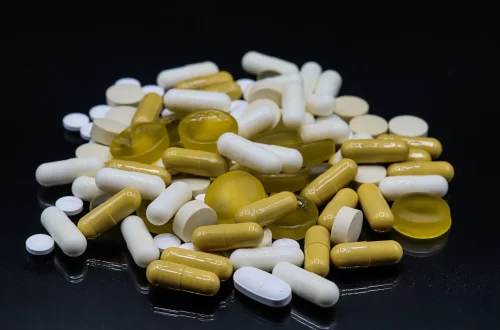
Do Swedish Fish Contain Gelatin or Are They Gelatin-Free?
Swedish Fish have earned their place as one of the most beloved candy options worldwide. With their unique shape, vibrant colors, and sweet, chewy texture, these gummy treats have captivated the taste buds of children and adults alike. But as the candy market has evolved, so too have consumer preferences—particularly when it comes to dietary restrictions and ingredient transparency. As a result, many candy enthusiasts find themselves wondering about the components of their favorite snacks. Among these inquiries, the question of whether Swedish Fish contain gelatin looms large.
Gelatin, a common gelling agent derived from animal collagen, is prevalent in many gummy candies, providing the signature chewy texture that consumers adore. However, with the increasing popularity of vegan and vegetarian lifestyles, there has been a significant shift toward gelatin-free alternatives. This transformation has prompted both manufacturers and consumers to rethink the ingredients that go into beloved confections.
In today’s market, it’s essential for consumers to stay informed about the contents of their favorite candies, not only to align with personal dietary choices but also for ethical and health reasons. This article seeks to explore the intricate details surrounding Swedish Fish and their ingredient composition, shedding light on whether these iconic candies contain gelatin or if they are, in fact, gelatin-free.
Understanding Gelatin: What Is It and Where Does It Come From?
Gelatin is a protein substance that is derived from collagen, a natural protein found in animal connective tissues. It is most commonly extracted from the skin, bones, and cartilage of animals such as cows and pigs. This ingredient is widely used in the food industry due to its ability to create a unique texture in various products, particularly in gummy candies, marshmallows, and jellies. The gelling properties of gelatin make it an ideal choice for manufacturers who want to achieve that signature “chewy” mouthfeel.
Beyond its culinary uses, gelatin has also found applications in pharmaceuticals and cosmetics. For example, it is used as a binding agent in capsules and as a stabilizer in certain beauty products. Its versatility is one of the reasons why it has been a staple ingredient in many recipes for centuries.
However, the use of gelatin raises ethical concerns, particularly among vegetarians and vegans who avoid animal products. The growing awareness of animal welfare has led to a demand for gelatin alternatives. This has resulted in the development of plant-based gelling agents such as agar-agar, pectin, and carrageenan. These alternatives not only cater to dietary restrictions but also appeal to consumers who prefer a cruelty-free lifestyle.
When it comes to candies like Swedish Fish, understanding what gelatin is and its origins can help consumers make informed choices about the products they consume. This knowledge has become increasingly important as brands strive to provide transparency about their ingredients.
Do Swedish Fish Contain Gelatin?
The answer to whether Swedish Fish contain gelatin is a resounding no. Swedish Fish are made without gelatin, which makes them an appealing option for those who follow a vegetarian or vegan diet. Instead of gelatin, Swedish Fish utilize alternative gelling agents that help achieve their distinctive chewy texture.
The ingredients of Swedish Fish primarily include sugar, corn syrup, and modified corn starch, along with artificial flavors and colors. The absence of gelatin not only makes these candies more inclusive for various dietary preferences but also broadens their appeal to a wider audience.
Furthermore, the decision to omit gelatin aligns with a growing trend in the candy industry towards more transparent and ethical ingredient sourcing. Manufacturers are increasingly aware of consumer preferences and are adapting their recipes to meet the demands of a more health-conscious and environmentally aware market.
Additionally, the absence of gelatin contributes to the unique texture and flavor profile of Swedish Fish. Many fans appreciate this chewy candy for its satisfying bite and the burst of flavor that accompanies each piece. By focusing on alternative ingredients, the makers of Swedish Fish have managed to create a product that stands out in a crowded market, appealing to both traditional candy lovers and those seeking gelatin-free options.
For those who enjoy Swedish Fish, this revelation is undoubtedly a positive one. It allows consumers to indulge in their favorite candy without compromising their dietary choices or ethical beliefs.
Alternative Gelling Agents Used in Candies
As the demand for gelatin-free products continues to rise, manufacturers have turned to a variety of alternative gelling agents to achieve the desired texture in candies. These alternatives not only cater to the preferences of vegetarians and vegans but also provide unique qualities that can enhance the overall candy experience.
One popular substitute for gelatin is agar-agar, which is derived from red algae. Agar-agar is known for its strong gelling properties and is often used in Asian desserts, jellies, and puddings. It can set at room temperature and does not require refrigeration, making it a convenient option for many candy manufacturers.
Another common alternative is pectin, a natural fiber found in the cell walls of fruits. Pectin is often used to create jams, jellies, and fruit-based candies. It provides a slightly different texture than gelatin, often resulting in a firmer candy that still retains a pleasant chewiness. This makes pectin a versatile option for those looking to create fruit-flavored confections.
Carrageenan, derived from red seaweed, is another gelling agent that has gained popularity in the food industry. It is often used in dairy products and can provide a creamy texture as well as a gelling effect. While it is less commonly found in gummy candies than agar-agar or pectin, it still serves as a viable alternative for certain products.
The shift towards using alternative gelling agents reflects a broader trend in the food industry to accommodate diverse dietary needs. As consumers become more conscious of what goes into their food, manufacturers are responding with innovative solutions that maintain the quality and enjoyment of their products without compromising on ethical or health standards.
Consumer Preferences and the Future of Candy Ingredients
The landscape of the candy industry is rapidly evolving, driven by changing consumer preferences and a growing demand for transparency in ingredient sourcing. As more individuals adopt vegetarian, vegan, and other specialized diets, manufacturers are being called upon to adapt their recipes and ingredient lists accordingly.
This shift is not merely a trend but is becoming a standard expectation among consumers. People are no longer satisfied with generic answers about food ingredients; they want to know precisely what they are consuming and how it aligns with their values. This has led to an increase in brands that proudly advertise their gelatin-free or plant-based offerings, attracting a loyal customer base that prioritizes ethical consumption.
In response to these changes, candy manufacturers are investing in research and development to explore new ingredient combinations that meet the demands of modern consumers. This includes experimenting with alternative sweeteners, natural colors, and plant-based gelling agents. The future of candy appears to be one where inclusivity and ethical sourcing take center stage, with a focus on creating delicious products that cater to a diverse audience.
Additionally, social media and online platforms have played a significant role in shaping consumer awareness and preferences. With the ability to share information and reviews instantly, consumers are more informed than ever about the products they choose. This increased scrutiny has prompted brands to be more transparent about their ingredients and sourcing practices, fostering a culture of accountability within the industry.
In conclusion, the landscape of candy consumption is changing, and brands like Swedish Fish that embrace these shifts will likely thrive in the evolving market. The absence of gelatin in Swedish Fish is just one example of how manufacturers are responding to consumer demands for more ethical and inclusive food options.
**Disclaimer:** This article is for informational purposes only and does not constitute medical advice. For any health-related concerns or dietary changes, please consult a qualified healthcare professional.




